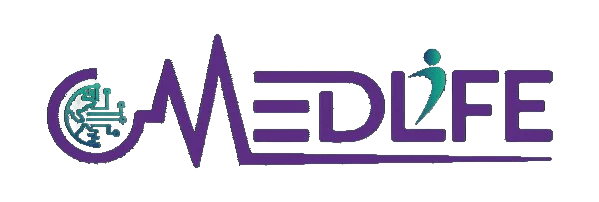Managing a practice involves more than just being a physical therapist, billing procedures have to be executed properly to keep your business funded and operating. With changes made to the 2025 physical therapy billing policies, it’s important to understand how to apply modifiers, correct coding, and remain compliant with Medicare’s cutbacks. This guide will prepare you for everything, from CPT and ICD-10 coding, reimbursement, and unit calculations, to changes in 2025.
Understanding PT Billing Units
Services are reported and paid for using specific billing units. These are subdivided into time-based units and service-based units. A time-based unit is an incremented payment model that requires direct, one-on-one interaction with a patient for a quarter hour. It includes the following codes: 97112 neuromuscular re-education and 97110 therapeutic activities. These services abide by the “8-Minute Rule”: a minimum of 8 minutes of service for a single unit billed.
No matter how long the service is performed, service-based units are billed for each session attended. An example of this would be unsupervised electrical stimulation (G0283) as well as physical therapy examinations (97161–97163). There is no loss of payment during the session, and accuracy of billing and avoidance of an audit or denial is obtained as long as there is an understanding of unit differentiation.
Need Help with Physical Therapy Billing?
Book a free consultation to simplify your billing, speed up reimbursements, and cut down denials.
TALK TO AN EXPERTUnderstanding the Core Codes: ICD-10, CPT, and HCPCS
ICD-10 Codes: Diagnosing the Why
ICD-10 codes (International Classification of Diseases) are used to document the medical necessity behind your services. These PT billing codes explain why a patient is receiving treatment and justify the interventions provided. Accurate coding here is critical because it directly affects whether insurance will approve or deny reimbursement.
Examples of commonly used ICD-10 codes in PT:
- M54.5 – Low back pain
- M62.830 – Muscle spasm of the back
- S43.421A – Sprain of right rotator cuff capsule
- M25.561 – Pain in the right knee
Each of these codes gives insurers the necessary context to support the CPT (procedural) codes that follow.
CPT Codes: Explaining the What
CPT (Current Procedural Terminology) codes describe the actual treatment provided. Developed by the American Medical Association, CPT codes are essential for billing medical, surgical, and diagnostic services across all healthcare disciplines.
For physical therapy, they cover services like evaluations, manual therapy, and therapeutic exercises. Here’s a look at a few key examples:
- 97110 – Therapeutic exercises
- 97112 – Neuromuscular re-education
- 97140 – Manual therapy
- 97530 – Therapeutic activities
- 97161–97163 – Initial evaluations (low to high complexity)
- 97164 – Re-evaluation
Each code is tied to time or service-based billing, which we’ll cover shortly.
HCPCS Codes: Supplementing the How
HCPCS (Healthcare Common Procedure Coding System) codes expand on what CPT codes offer, especially for equipment, supplies, and non-physician services. These are especially important when billing Medicare for PT and are often required by private insurers as well.
For example:
- A4467 – Bilateral shoulder brace
- G0283 – Electrical stimulation, unattended
- G0121 – Screening colonoscopy
- E0745 – Neuromuscular stimulator
In some cases, HCPCS codes overlap with CPT, but Medicare may require you to use the HCPCS code if both exist. Always consult the payer guidelines to know which code takes precedence.
Wise Use of Modifiers
The modifiers provide detailed explanations along with the submitted claims. Modifiers GP and KX have specific meanings where GP supports that the services are part of physical therapy management, while KX indicates that medically necessary therapy has surpassed the therapy cap limit. Other modifiers 59, GA, CQ, and CO are used to explain the uniqueness of the procedures, informed consent from the patient, and procedures done by aides under supervision.
Claim denials are less likely to happen when appropriate modifiers are employed, providing faster payments and precise claim submissions.

Impact and Updates Reimbursement 2025
A significant change in the 2025 Medicare Physician Fee Schedule is the decrease in the conversion factor from $33.29 to $32.35, which translates to a 2.83% reduction. This will impact private practices. Nonetheless, CMS has made changes designed to ease the administrative burden.
The KX modifier therapy threshold has changed to $2,410, which allows providers to exceed that limit as long as services rendered are deemed necessary. The $3,000 targeted medical review threshold remains unchanged.
CMS has simplified the certification of the Plan of Care. As long as the physician’s order is signed, it can be considered certified as long as the complete plan is sent within one month of the evaluation.
Also, supervision of PTAs under Medicare Part B will change from direct supervision to general, allowing for greater flexibility and availability, especially in rural areas.
The most commonly utilized therapeutic codes will have their reimbursement adjusted for 2025. Physical therapy reimbursement continues to show regional variances owing to the adjustment in the conversion factor, which is declining. Below is a table summarizing the therapeutic codes:
Medicare Reimbursement Rates for 2025 vs 2024
(National Payment Amount – Non-Facility)
| HCPCS Code | Description | 2025 Rate | 2024 Rate |
| 97110 | Therapeutic exercises | $28.79 | $29.29 |
| 97112 | Neuromuscular reeducation | $32.02 | $33.62 |
| 97116 | Gait training therapy | $28.79 | $29.29 |
| 97140 | Manual therapy (1+ regions) | $27.17 | $26.96 |
| 97530 | Therapeutic activities | $34.61 | $36.62 |
| 97150 | Group therapeutic procedures | $17.47 | $17.98 |
| 97161 | PT evaluation – low complexity (20 min) | $98.01 | $100.20 |
| 97162 | PT evaluation – moderate complexity | $98.01 | $100.20 |
| 97163 | PT evaluation – high complexity | $98.01 | $100.20 |
| 97164 | PT re-evaluation (established plan of care) | $67.60 | $69.57 |
A Closer Look at the 8-Minute Rule:
Time-based services must follow the 8-Minute Rule, which places invoicing limits based on the duration of treatment given. A unit of treatment would be billed for direct therapy lasting between 8 and 22 minutes. 23 to 37 minutes would allow for 2 units, and so on. As with all billing requirements, thorough documentation is essential; each time-based service must be documented and billed separately for compliance purposes.
Common Billing Pitfalls and How to Avoid Them
Errors in physical therapy billing might cause payment delays or denials. Some of the most common mistakes include incorrect code use, failure to follow CCI edits (which prohibit certain code combinations), and insufficient documentation. Using outdated codes or billing services not justified by the diagnosis can also trigger audits or penalties.
Looking ahead to the billing guidelines 2026 and 2027, it’s likely that compliance standards will become even more stringent. Now is the time to tighten up your processes and documentation practices.
The Physical Therapy Billing Process, Step by Step
A well-organized billing workflow promotes timely payments. It begins with accurate service coding using CPT, followed by diagnostic matching with ICD-10 codes. Modifiers are added when appropriate, and the billing units are determined using the 8-Minute Rule. Claims are verified for coding conflicts or errors, augmented with HCPCS codes as needed, and then filed. If denials occur, they should be appealed swiftly and corrected.
Best Practices to Maintain Accuracy and Compliance
Understanding medical billing codes is only one piece of the puzzle; submitting successful claims requires more. Training your staff should be ongoing, especially concerning changes in guidelines and payer policies. Careful and accurate documentation mitigates the risk of claim denials. In addition, physical therapy billing software can automate compliance verification, as well as ensure proper coding resources are used.
Collections can be streamlined, and costs can be avoided when there is open communication with patients. Minor issues that could lead to significant financial losses can be detected in internal audits. With these practices, you can prepare your clinic for 2025 while staying ahead of the predicted 2026 and 2027 upgrades.


